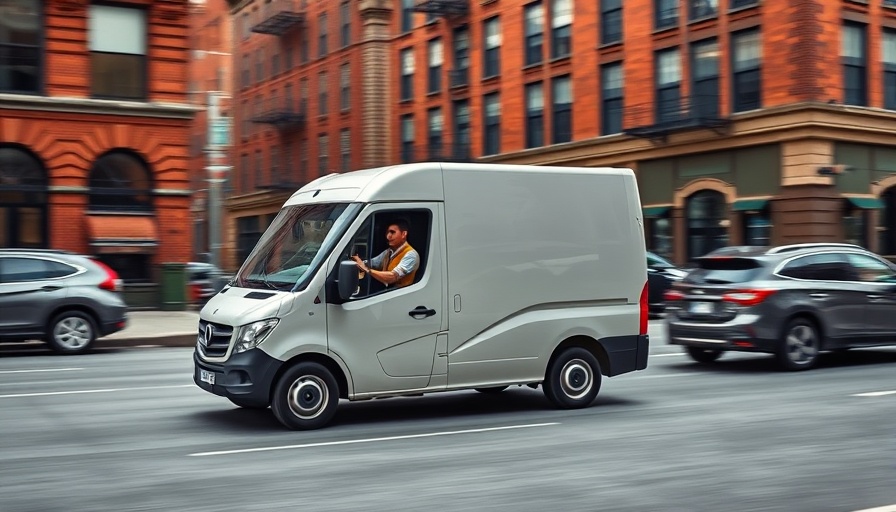
Honda’s Venture into Micromobility: A Game Changer for Urban Logistics
As cities grow more congested and e-commerce booms, delivery services are seeking innovative solutions to navigate urban landscapes effectively. The latest development comes from Honda, which has introduced a unique solution to meet the growing demand for efficient cargo transportation: the Fastport eQuad. Aimed at redefining last-mile delivery, this vehicle exemplifies how automobile manufacturers are adapting to the increasing need for smarter, environmentally-friendly transportation alternatives.
The Rise of Cargo Delivery E-Quads
In recent years, cities such as New York and Amsterdam have seen a surge in the usage of small, battery-assisted vehicles designated for cargo delivery. These e-quads, which are different from traditional e-bikes, are specifically designed for logistics rather than personal use, allowing them to carry heavier loads while adhering to local guidelines in metropolitan bike lanes. Honda's eQuad offers an exciting new contender in this sector, with a design that is both compact and capable.
Specifications and Features of the Fastport eQuad
The Fastport eQuad comes in two sizes, accommodating cargo weights ranging from 320 to 650 pounds. What sets this vehicle apart is not only its size but also its thoughtful incorporation of features designed with usability in mind. For instance, the swap-able Mobile Power Pack batteries streamline operations for delivery drivers, reducing downtime and enhancing efficiency. At 22-pounds each, these batteries allow for quick swaps, essential for the fast-paced logistics environment.
Market Demand and Competitive Landscape
With the fast-growing e-commerce sector, businesses are increasingly exploring efficient delivery methods to keep up with customer expectations. Delivery giants like Amazon and UPS have already embraced e-quads in their fleets, leveraging their agile design to circumvent the congestion faced by traditional delivery trucks. Honda's entry into this market underscores the significance of micromobility solutions in the future of logistics, with benefits that resonate across both environmental and economic spheres.
Innovation and Sustainability in Micromobility
Honda aims to position the eQuad as a 'software-defined vehicle,' hinting at a future where improvements can be made post-purchase, thereby extending the vehicle's lifespan and enhancing its value for users. This mirrors trends seen across the tech industry, where updates and enhancements are expected to evolve a product's capabilities beyond its initial launch.
Manufacturing and Local Impact
The production of the eQuad will take place at Honda's Performance Manufacturing Center in Ohio, a shift from its previous focus on luxury performance vehicles such as the Acura NSX. This transition may not only affect the local economy—providing new jobs and stimulating growth within the manufacturing sector—but also indicates manufacturers' adaptability as they respond to emerging market needs.
Future Insights: Where Does This Leave the Automotive Industry?
Honda's foray into cargo delivery micromobility highlights a significant shift in the automotive industry—one where traditional car manufacturers must now contend with evolving urban mobility needs. As cities expand and the demand for quick, efficient delivery intensifies, companies like Honda must balance innovation with practical logistics to remain competitive.
Conclusion: A New Chapter in Urban Logistics
The Fastport eQuad represents more than just a new vehicle; it stands as a testament to the ongoing evolution in urban transport logistics. With the capability to meet the demands of modern e-commerce, Honda is poised to make a notable impact on how goods are delivered in crowded urban centers. As innovation in technology and sustainable practices merges with logistics, the transportation landscape is set for continual transformation.
 Add Row
Add Row  Add
Add 



Write A Comment